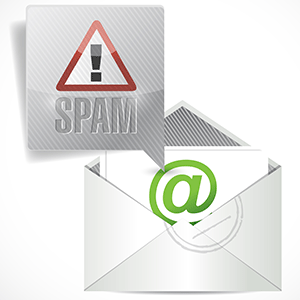Why Is My Email Going to Spam

Do you often ask the question "Why is my email going to spam?"
There are a number of reasons why your email could be going to the spam folder including:
- Infrastructure Issues (incorrect SPF records, modification to your server without updating, etc.)
- Sender Reputation
- Content
When we are hired to troubleshoot accounts, we can quickly identify whether or not the problem may be related to infrastructure (in many cases, the SPF records are simply incorrect on the "from" domains) or if there are IP reputation issues such as a high number of bad addresses, high complaints, spam traps, etc. The piece of the puzzle that's not so cut and dry is content spam filtering. It used to be as simple as avoiding certain words or phrases in your email content, but it's not as easy anymore. Spam filters are far more sophisticated and look at thing such as:
- The type of message being sent (transactional, marketing, etc.)
- Your subject line
- The body copy of the email (including links IN the email as well as destination links in some cases)
- End user feedback over time
- "From" addresses
Let's take a quick look at each of these:
Type of Message Being Sent:
Updates and transactional emails are generally less likely to wind up in the spam folder than marketing messages or newsletters. These types of messages are going to be scrutinized a little more heavily.
Subject Line:
This is fairly straightforward. Take a look in your spam folders and scan the subject lines. Consider avoiding patterns that you see there.
Body Copy:
In the past, this used to be fairly simple: Avoid "trigger" words. But that's not so much the case now. Sure... if you overuse certain words or try to disguise them with special characters (ie ca$h, Fre.e, etc), it's not going to help your case. This isn't necessarily specific to YOUR content, but is compared against millions of email messages the ISP receives. If your messages have patterns similar to OTHER types of messages that the ISPs have determined are "spam", then your message may be blocked as well. For instance, if you use Gmail, take a look in the spam folder...
You may find "reasons" such as: "It contains content that's typically used in spam messages." or "It's similar to messages that were detected by our spam filters." That means that other people have sent emails that are similar to yours that have been determined to be spam. You also need to consider the domains in your messages. Not only the URLs in the content, but the destination URLs (if you're using tracking links), URLs in the message headers, URLs in the unsubscribe links, etc. And remember, it's not just what you see on the surface, it's what's in the underlying code as well. And finally... check your HTML. If your code is not correct, your messages have a higher chance of hitting the spam folder.
End User Feedback Over Time:
This can either be specific to your messages or, more often than not, the overall feedback for all messages received at the ISP and how users categorize these messages. Are they sending similar messages to the spam folder? Are they marking similar messages that are IN the spam folder as "not spam"?
From Addresses:
Aside from the from address DOMAIN potentially causing problems (either due to a poor reputation or missing SPF records, for example), we've seen that certain from addresses have caused messages to not only go to spam, but also specific email addresses.
For example, we were recently troubleshooting for a client who found their email in Gmail spam with the following warning: "Be careful with this message. Similar messages were used to steal people's personal information. Unless you trust the sender, don't click links or reply with personal information." After extensive testing, we discovered that it was something about the actual "from email address", NOT the from DOMAIN! We've seen this rarely in the past when using from addresses like "info@" or "do-not-reply@" but we've also recently seen it with some addresses using the client's domain (i.e.bob.smith@clientdomain.com) despite the fact that everything was authenticated properly.
Keep in mind, it's generally never just one specific item. The ISPs use sophisticated algorithms that give different weights to different pieces of the puzzle. In some cases, it may be as simple as changing the from address. In others, it may require looking at several things and modifying your from email, subject, and message content.
Author: Heather Seitz
Attention Readers, Publishers, Editors, Bloggers, and Marketers: You may republish or syndicate this article without any charge. The only thing I ask is that you keep the newsletter article or blog post exactly as it was written and formatted, with no changes. You must also include full publication attribution and back links as indicated. This information has been provided by http://www.EmailDelivered.com and written by Heather Seitz. Don’t forget to sign up for the EmailDelivered Pulse newsletter for articles, tips, and recommended resources related to email marketing and email deliverability.
Related posts:
Revealed:
How to Get Your Emails to the Inbox
If you want to get more of your emails to the inbox, you need to know the secrets that the Email Service Providers AREN’T willing to tell you. For a limited time, I’m sharing some select tips that top Internet Marketers know... for FREE.
Here’s what you’ll get right now...
- The How to Guide for getting your emails back to the inbox.
- How to find (and improve) your email “reputation” (how the ISPs see you).
- 5 Email KILLERS that your email service provider is purposely hiding from you.




No comments yet.